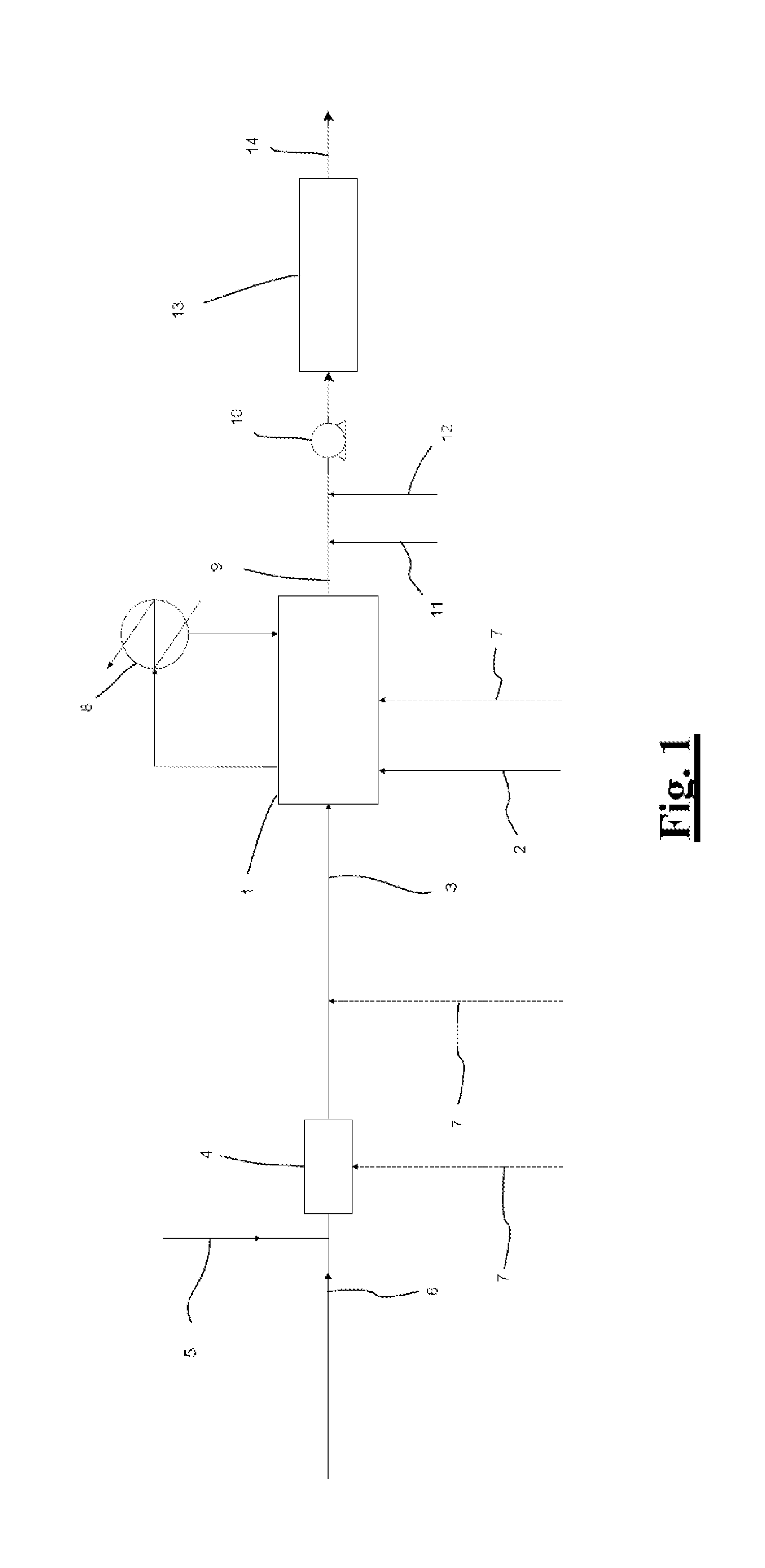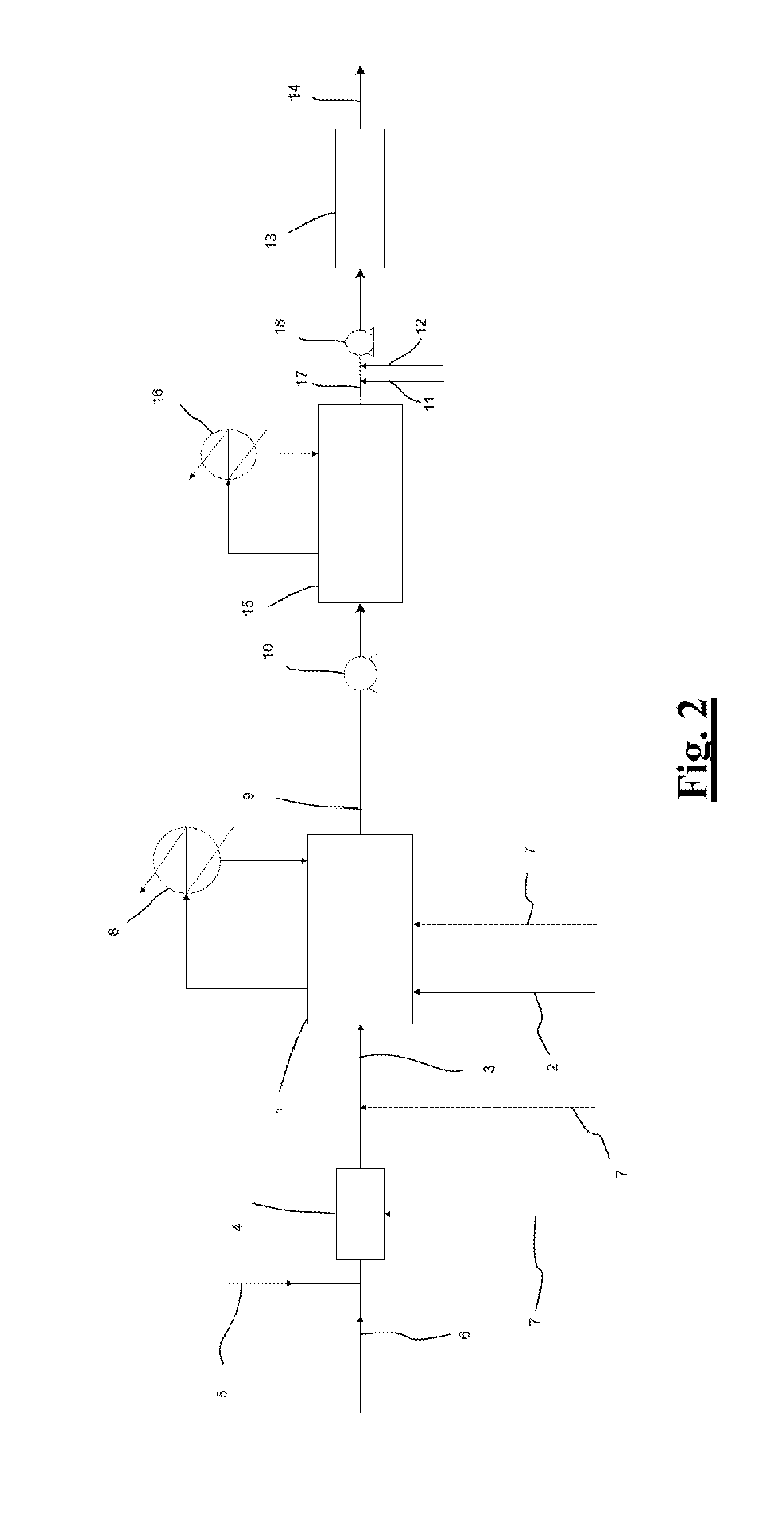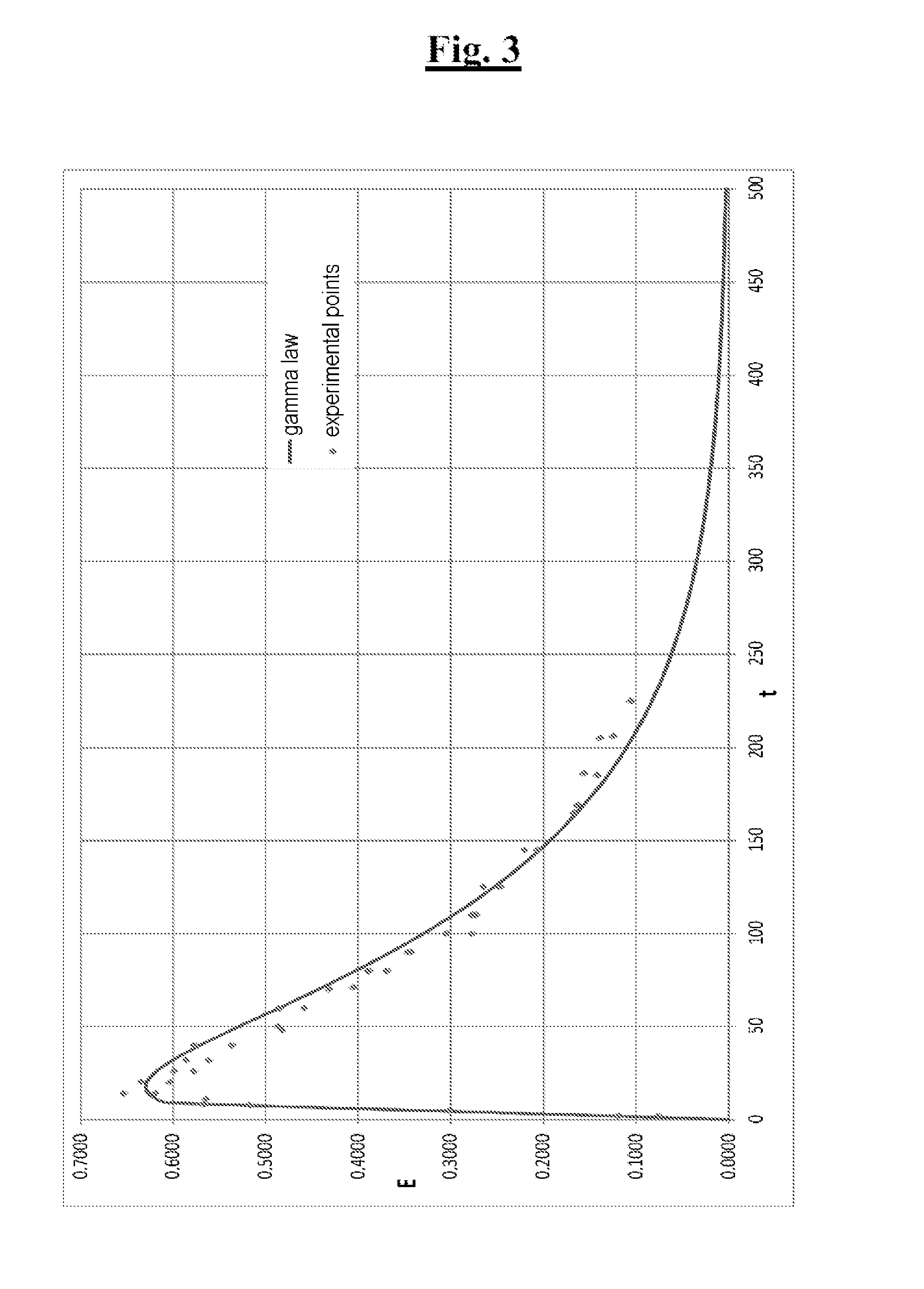Process for continuous sytnthesis of a diene elastomer
- Summary
- Abstract
- Description
- Claims
- Application Information
AI Technical Summary
Benefits of technology
Problems solved by technology
Method used
Image
Examples
example 1
[0189]Process for Synthesizing a Polyisoprene Via Coordination Catalysis in Highly Concentrated Medium According to One Variant of the Invention
[0190]A few definitions:[0191]diethylaluminium chloride=DEAC[0192]diisobutylaluminium hydride=DiBaH
[0193]The polymerisation process was performed on a continuous line in the installation represented in FIG. 1 comprising a gas-phase reactor 150 litres in total with twin Z-shaped arms, equipped with a discharge device with an emptying screw and a gear pump.
[0194]Isoprene and pentane are mixed in a dynamic mixer 4 provided for this purpose upstream of the polymerisation reactor 1. The mixture obtained is injected in the form of a stream entering 3 directly into the reactor 1.
[0195]The isoprene is injected at a rate of 7.52 kg / h as a stream 5 into the mixer 4.
[0196]The pentane is injected at a rate of 12.40 kg / h as a stream 6 into the mixer 4, i.e. about 37% by mass of monomer in the reaction medium.
[0197]A coordination catalytic system is also ...
example 2
Process for Synthesizing a Polyisoprene by Coordination Catalysis in Highly Concentrated Medium According to Another Variant of the Invention
[0219]The polymerisation proceeds in the same manner as in Example 1. The reagents and the amounts injected into reactor 1 are the same. The stopper and the antioxidant are no longer injected at the outlet of reactor 1.
[0220]The gear pump 10 transfers the elastomer paste to a self-cleaning blender with a gas phase 15. The flow rate transferred by the gear pump 10 is equal to the sum of the flow rates injected into reactor 1.
[0221]The self-cleaning blender is a twin-arm blender-reactor with a total volume of 39 litres, with a discharge device consisting of an emptying twin screw and a gear pump 18. The flow in this twin-arm mixer-reactor may be likened to a piston flow.
[0222]The pressure of the gas phase is set at 0.16 barg relative, and the vapours are condensed in an external condenser 16 and conveyed to the self-cleaning blender 15.
[0223]The ...
example 3
Process for Synthesizing a Polyisoprene by Coordination Catalysis in Highly Concentrated Medium not in Accordance with the Invention
[0230]The polymerisation process was performed on a continuous line in the installation comprising a stirred and self-cleaning reactor of continuous blender technology, with a gas phase and twin arms, with a total volume of 29 litres, equipped with a discharge device consisting of a twin screw and a gear pump. The speed of the arms is 20 rpm.
[0231]Isoprene and pentane are mixed in a dynamic mixer provided for this purpose upstream of the polymerisation reactor. The mixture obtained is injected in the form of a stream entering directly into the polymerisation reactor.
[0232]The isoprene is injected at a flow rate of 3.63 kg / h into the dynamic mixer.
[0233]The pentane is injected at a flow rate of 4.47 kg / h into the dynamic mixer, i.e. about 42% by mass of monomer in the reaction medium.
[0234]A coordination catalytic system is also injected directly into th...
PUM
| Property | Measurement | Unit |
|---|---|---|
| Fraction | aaaaa | aaaaa |
| Fraction | aaaaa | aaaaa |
| Fraction | aaaaa | aaaaa |
Abstract
Description
Claims
Application Information
 Login to View More
Login to View More - R&D
- Intellectual Property
- Life Sciences
- Materials
- Tech Scout
- Unparalleled Data Quality
- Higher Quality Content
- 60% Fewer Hallucinations
Browse by: Latest US Patents, China's latest patents, Technical Efficacy Thesaurus, Application Domain, Technology Topic, Popular Technical Reports.
© 2025 PatSnap. All rights reserved.Legal|Privacy policy|Modern Slavery Act Transparency Statement|Sitemap|About US| Contact US: help@patsnap.com



